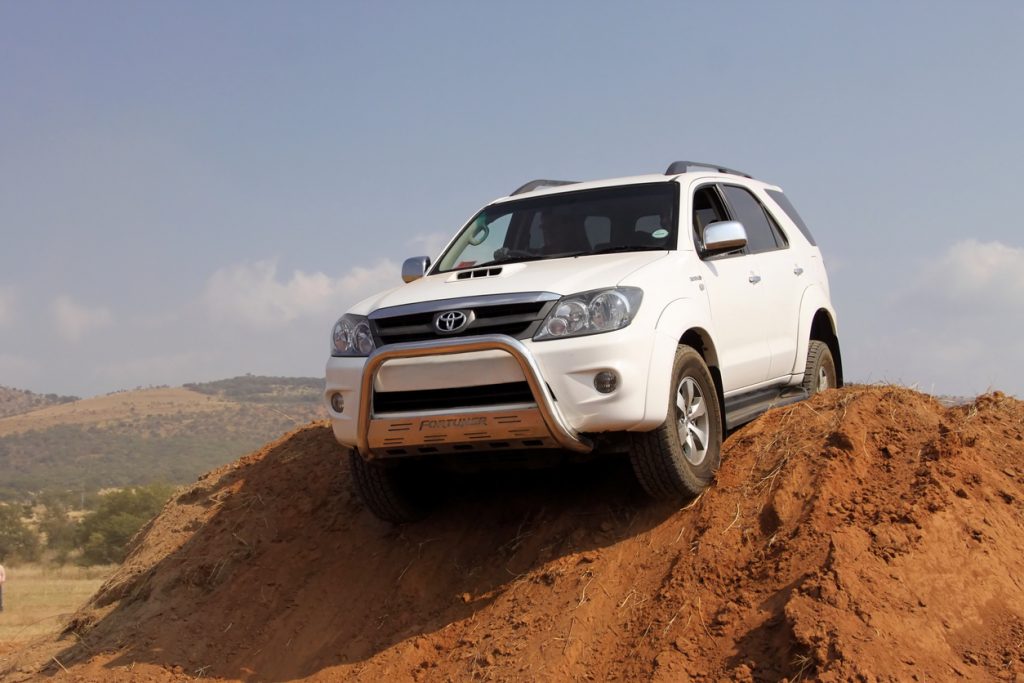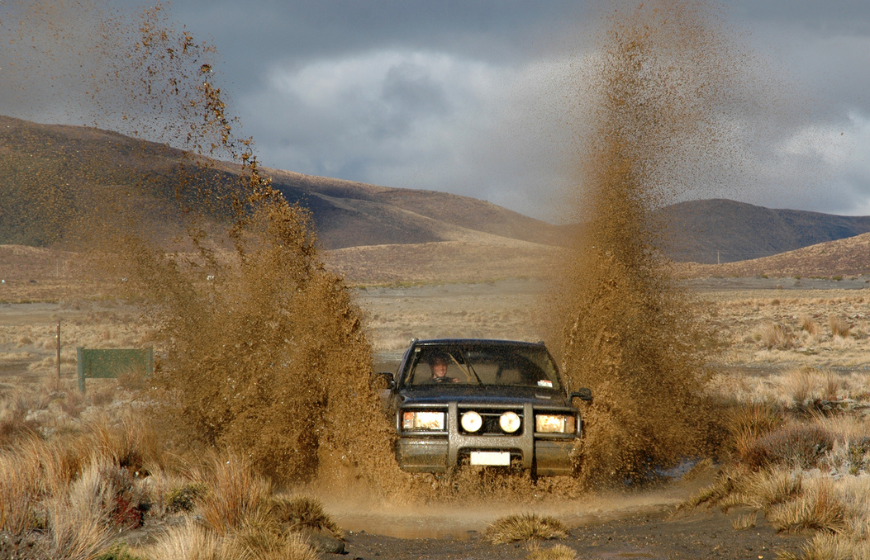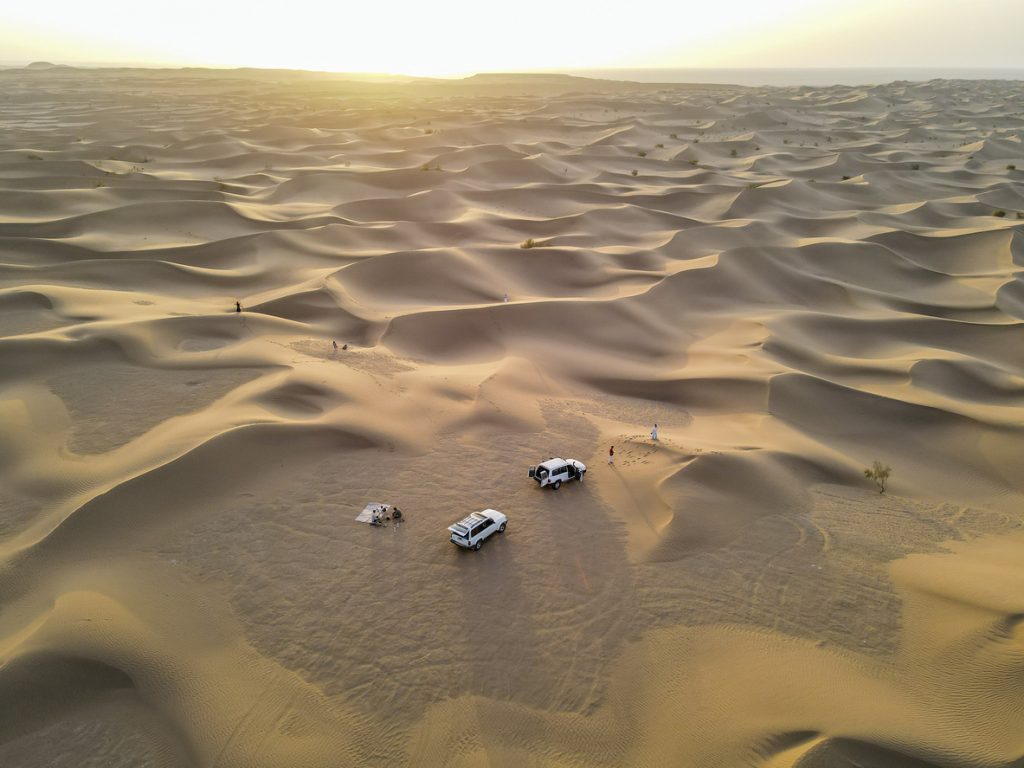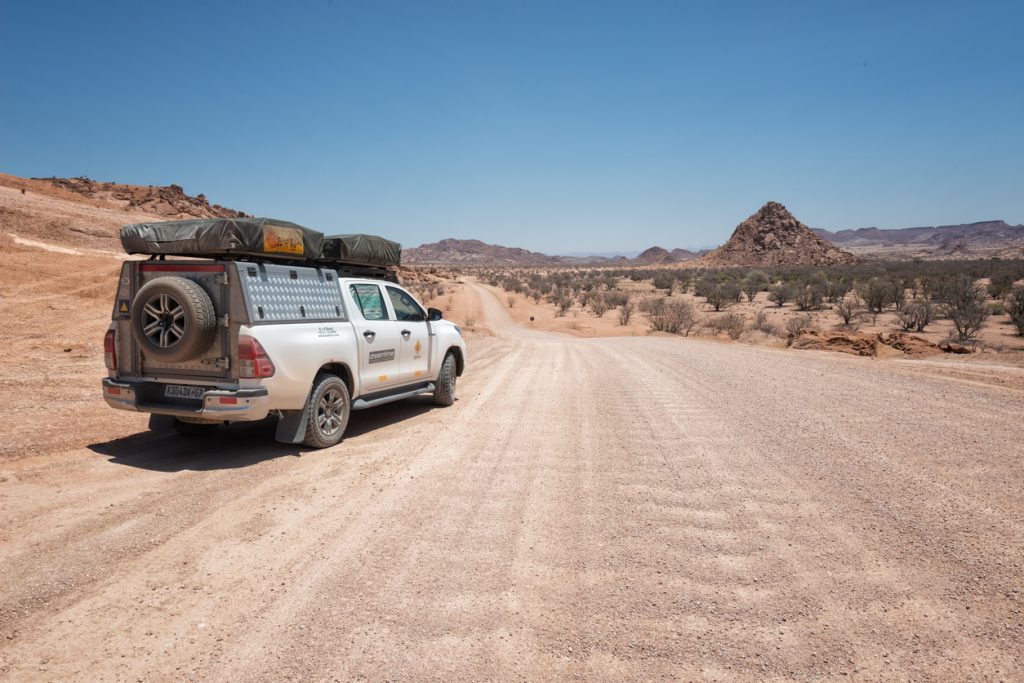MapStudio's Botswana Adventure Road Map [Map Review]
MapStudio's Botswana Adventure Road Map is the ideal travel companion for adventure travellers heading into one...
 27 November 2023
27 November 2023 
Southern Africa’s terrain has it all, from sand and mud to rocks and gravel. These conditions can be daunting, especially for the first-time traveler. You’ll need to be well prepared, know your vehicle, and approach your routes carefully.
If you’re unsure of your off-roading skills, it might make more sense to get around with a guide and support vehicle. If, on the other hand, you’ve got some experience in a 4×4, keep reading for our tips on how to have the adventure of a lifetime in your rental 4×4.
This is especially useful if you have no prior 4×4 experience. Get to know your vehicle, its features, and how it handles in different conditions all under the guidance of a specialist.

Above: 4×4 Course at Bafokeng in Rustenburg, South Africa.
Most courses range from one to two days and you’ll really get to grips with the skills and techniques you’ll need to navigate Southern Africa’s varied and oftentimes challenging terrain.
Make sure you have a reliable GPS as you’ll often find yourself in places where there is no mobile reception. You should download Google Maps for offline use and take paper maps for the regions you’ll be traveling in.
Road Trip Explorer is useful and thorough with road trip itineraries and works with your smartphone or tablet. For extra safety, get a satellite phone so you can always stay connected should you get stuck or run into mechanical issues. Consider Drive South Africa for reliable and cheap 4×4 rental.
If you plan on traveling Southern Africa in the rainy season, mud will present a constant challenge. Most of the time it’s a good idea to stop your 4×4, get out and assess the situation.
You’ll want to see how deep the mud is and how much water you’re dealing with. Your tire pressure can make a big difference. A good place to start is between 1.3 and 1.8 bar – any lower and you risk a puncture.
Lock the center differential for the most traction. If your 4×4 has the terrain response feature, turn it on before you reach the mud. You’ll want to adjust your speed depending on how much momentum you need.
Try to maintain a steady speed – fast enough to make it through without sinking or getting stuck, but slow enough to navigate hidden obstacles.

Above: Muddy 4X4 Trail, South Africa
Don’t break suddenly or steer too aggressively. Stick to the tracks that have already been made, as that’s where the ground is most compact. If you come across watery tracks, drive through them instead of around them. If you’ve lost all traction, reverse the way you came and try again at a slightly higher speed.
Wet or dry, compact or loose, driving in sand can really put your skills to the test. The key to navigating sand is to lower your tyre pressure. This will create a larger footprint on your tires which improves traction. While the optimal pressure depends on your tire profile, vehicle type, and overall weight, a good rule of thumb is 0.8 bar. We suggest using a digital gauge for the most accurate reading.
When you move off you’ll need lots of power, so use low-range, make smooth gear changes and make sure your wheels are pointed straight ahead. When it comes to speed, you’ll want to drive slowly and keep a steady pace. Don’t make any abrupt movements or sharp turns. Rather steer as little as possible and let the wheels recenter themselves with smaller inputs. Stick to existing tracks and the sand will be firmest there.

Above: Ariel Drone View of Two 4×4 SUV’s in Namib Desert Area
Avoid braking on sand. Rather press the clutch and let your 4×4 coast to a stop. Before you move on again, reverse a meter or so to compact your launch point and gain some momentum.
Gravel roads come in all kinds from dry and dusty to loose and rocky. They can be tough to navigate, but they’re a reality when traveling through Southern Africa.
Whether it’s a smooth or bumpy gravel road, it’s smartest to travel at a slow and steady pace. A good rule of thumb is to travel at 20% less than the speed limit.
If the road you’re traveling on is badly corrugated, slow down even more. Tire pressure can make a big difference too. If you’re traveling light, we’d suggest 1.8 bar. Inflate more as you add weight.

Above: 4×4 Vehicle on Gravel Road in Erongo Region, Namibia.
Always shift to 4×4 mode as you reach the gravel – this will ensure better traction. Always avoid aggressive braking and steering and never let your 4×4 run free, especially around corners or going downhill.
Bear in mind that overland travel can take longer than normal roadtrips, so ensure you factor in plenty of time for detours and exploration. Bring along enough water, food, and fuel to last for the duration of your trip and don’t forget essentials like a good medical aid kit. Finally, make sure you have all the necessary paperwork for crossing borders.